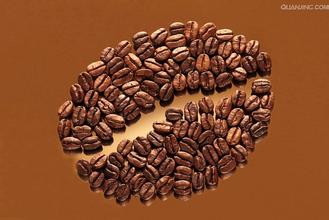How many coffee plantations are there in Rwanda?
The first problem that Malaba coffee farmers solved was to set up a washing station. Coffee cherries must be transported to a washing station within twelve hours of picking to remove the sugar coating under the outer skin of the coffee beans, otherwise the flavor of the coffee will be greatly damaged. In July 2001, with funding from UNR, the Office des Cultures Industrielles du Rwanda (OCIR-Café), ACDI/VOCA and ISAR, they built the first cleaning station near the main road in Cyarumbo district. However, the washing station was not activated until late in the harvest season, so only 200 kg (441 lb) of the harvest was washed that year. However, the result was unexpectedly good. In 2002, the washing station was upgraded to provide more coffee processing. ACDI/VOCA was responsible for funding the construction of pipelines to bring in Mount Huye mineral water and help improve the efficiency of the cleaning station. The pipeline was commissioned in March 2002.
During the 2002 harvest season, Rwanda introduced a new certification system to ensure that coffee beans delivered to washing stations maintained proper quality. About half of Aba Uzamgambi's members are certified, enabling the cooperative to find buyers in specialized markets in Europe and North America. Rwanda coffee, in its washed Arabica bean form, is of absolute quality. As far as Africa is concerned, its coffee industry stands out because the country thrives mainly on producing the best possible coffee beans. Rwandan coffee is gaining increasing popularity on the international market.
The mission of the Rwandan Coffee Association is to manage and supervise the operation of the Rwandan coffee industry from production to marketing. The recently revised mission focuses on policy formulation and implementation, with greater emphasis on efforts to improve professionalism and marketing in the coffee industry. Since its inception, the Rwandan Coffee Association has been instrumental in promoting Rwandan coffee culture and influence.
However, the soft, intense taste of the coffee is excellent. The taste of Rwandan coffee is described as "grassy", with tropical climate characteristics. In addition to the fruity sweetness of this coffee, it can also taste fresh, clear and fresh. Bourbon coffee grown in Rwanda is marvellous for its fruity sweetness, its rich, full-bodied aroma, and its long aftertaste. The coffee has a delicious, citrus sweet aroma and a deep chocolate color. Rwanda has about 33,000 hectares of coffee plantations and 500,000 people are engaged in coffee cultivation. With its high altitude and fertile volcanic soil, the country's fertile soil and climate are conducive to plant growth, and coffee trees seem to be driven or forced to grow upwards, or to grow too fast to produce the best coffee beans. Rwanda, the beautiful country of a thousand hills, has a long and rich culture of growing highland coffee, mainly high-quality Arabica coffee. Rwanda is the only country in the world that can fully enjoy the harmony between soil, elevation and climate. In this unique growing environment, Rwanda's high-quality coffee has a distinctive taste and aroma. Bourbon coffee grown in Rwanda is one of the original varieties of Arabica coffee grown worldwide-Rwanda Since the 1920s, Arabica coffee grown in Rwanda has been known worldwide for its unique fruity sweetness and rich grassy aroma. in recent year, that Rwandan government has taken active measures to promote coffee production, establish coffee production cooperatives in various places, and provide farmers with technical guidance and financial support, thus making coffee production develop rapidly

Important Notice :
前街咖啡 FrontStreet Coffee has moved to new addredd:
FrontStreet Coffee Address: 315,Donghua East Road,GuangZhou
Tel:020 38364473
- Prev

Flavor and taste characteristics of coffee varieties in Kenya introduction to the Cultural Origin of Fine Coffee Bean Manor
It entered Kenya in the 19th century, when Ethiopian coffee drinks were imported into Kenya through southern Yemen. But it was not until the early 20th century that the bourbon was introduced by the St. Austen Mission (St.AustinMission). Kenyan coffee is mostly grown at an altitude of 1500m, 2100m, and is harvested twice a year. To ensure that only ripe berries are picked, people must be in the forest
- Next

Colombian coffee brewing method to produce national flavor to describe the taste and price introduction
The suitable climate in Colombia provides a real natural pasture for coffee. Coffee trees in Colombia are mainly cultivated in the Andes, on steep slopes about 1300 meters above sea level, where the annual temperature is about 18 degrees Celsius, annual rainfall is 2000 to 3000 millimeters, latitude 1-11 15 north, longitude 72-78 west, and the specific range of elevation can exceed 2.000 meters. By
Related
- Detailed explanation of Jadeite planting Land in Panamanian Jadeite Manor introduction to the grading system of Jadeite competitive bidding, Red bid, Green bid and Rose Summer
- Story of Coffee planting in Brenka region of Costa Rica Stonehenge Manor anaerobic heavy honey treatment of flavor mouth
- What's on the barrel of Blue Mountain Coffee beans?
- Can American coffee also pull flowers? How to use hot American style to pull out a good-looking pattern?
- Can you make a cold extract with coffee beans? What is the right proportion for cold-extracted coffee formula?
- Indonesian PWN Gold Mandrine Coffee Origin Features Flavor How to Chong? Mandolin coffee is American.
- A brief introduction to the flavor characteristics of Brazilian yellow bourbon coffee beans
- What is the effect of different water quality on the flavor of cold-extracted coffee? What kind of water is best for brewing coffee?
- Why do you think of Rose Summer whenever you mention Panamanian coffee?
- Introduction to the characteristics of authentic blue mountain coffee bean producing areas? What is the CIB Coffee Authority in Jamaica?

